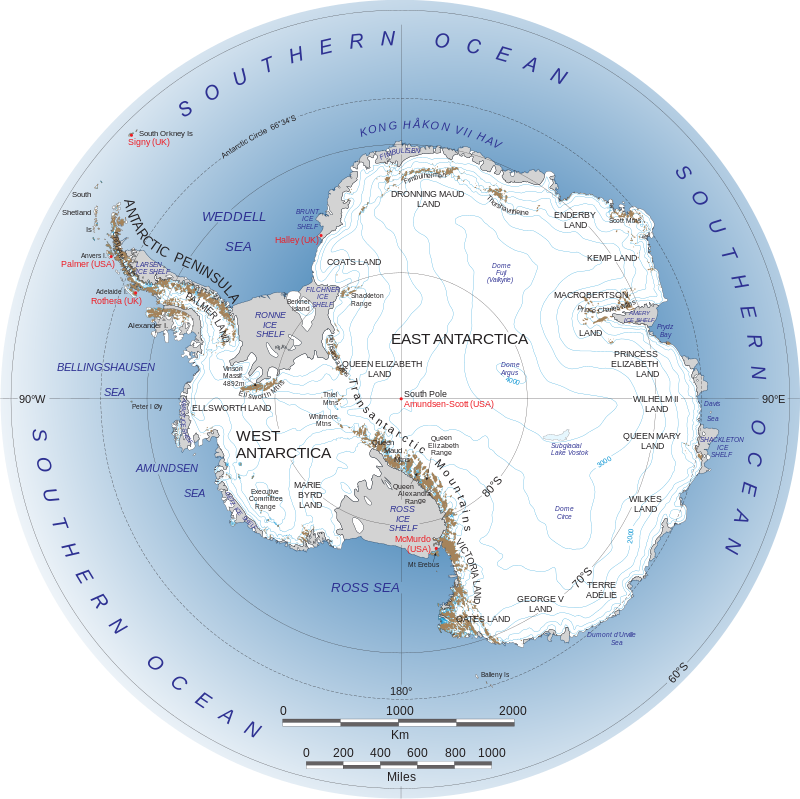by DOUGLAS FOX
 IMAGE/Wikipedia
IMAGE/Wikipedia
Nearly a kilometer below the ice scientists have found a Yellowstone-like geothermal glow that could create life-rich subglacial lakes—and lubricate Antarctic ice loss
Temperatures on the West Antarctic Ice Sheet can plummet below –50 degrees Celsius in winter. But under the ice scientists have found intense geothermal heat seeping up from Earth’s interior. The heat production that they measured is nearly four times the global average—“higher than 99 percent of all the measurements made on continents around the world,” says Andrew Fisher, a hydrogeologist at the University of California, Santa Cruz, who worked on the project. This excessive heat could melt up to 35 cubic kilometers of water off the bottom of the West Antarctic Ice sheet each year, according to results reported July 10 in Science Advances.
This meltwater could help create a vast, hidden habitat for aquatic life under the ice—a region that some scientists call the largest swamp on Earth. It could also influence the mechanics of the ice sheet by creating lubricated areas, which guide the flow paths and speeds of major glaciers that carry ice to the ocean. “We think that water is the knob that controls whether ice moves fast or slow,” says Slawek Tulaczyk, a glaciologist at U.C. Santa Cruz. Scientists like him need to understand that process if they are to predict just how much ice Antarctica will spill into the ocean as temperatures rise.
Researchers had already measured geothermal heat production at more than 34,000 sites around the world. But for decades, they could only make educated guesses about how much heat was seeping up under Antarctica’s ice—an area almost twice the size of Australia that had never been directly explored. That changed in January 2013 when a team co-led by Tulaczyk ventured deep into Antarctica and bored a hole through 800 meters of ice.
Scientific American for more
